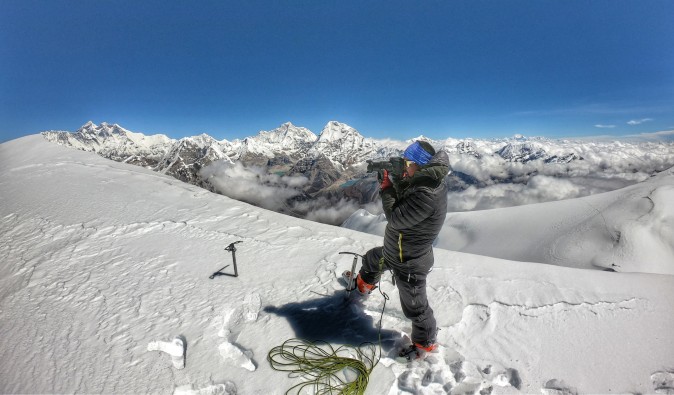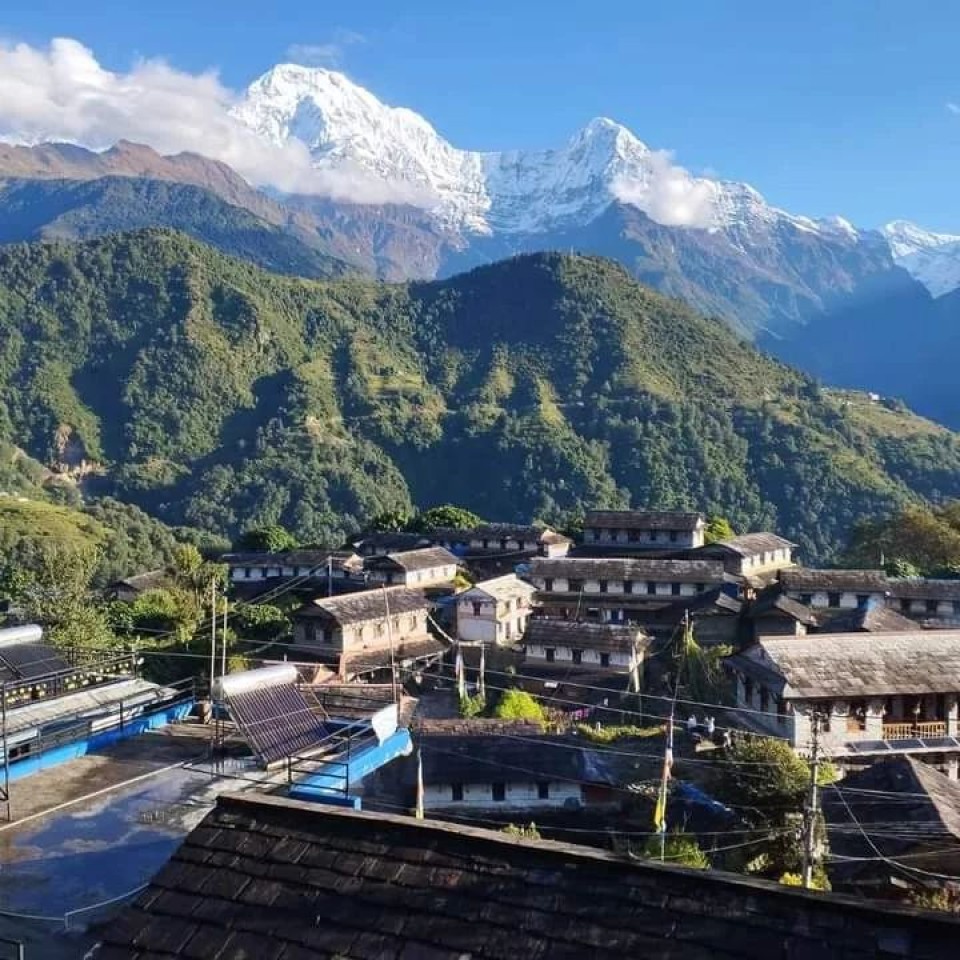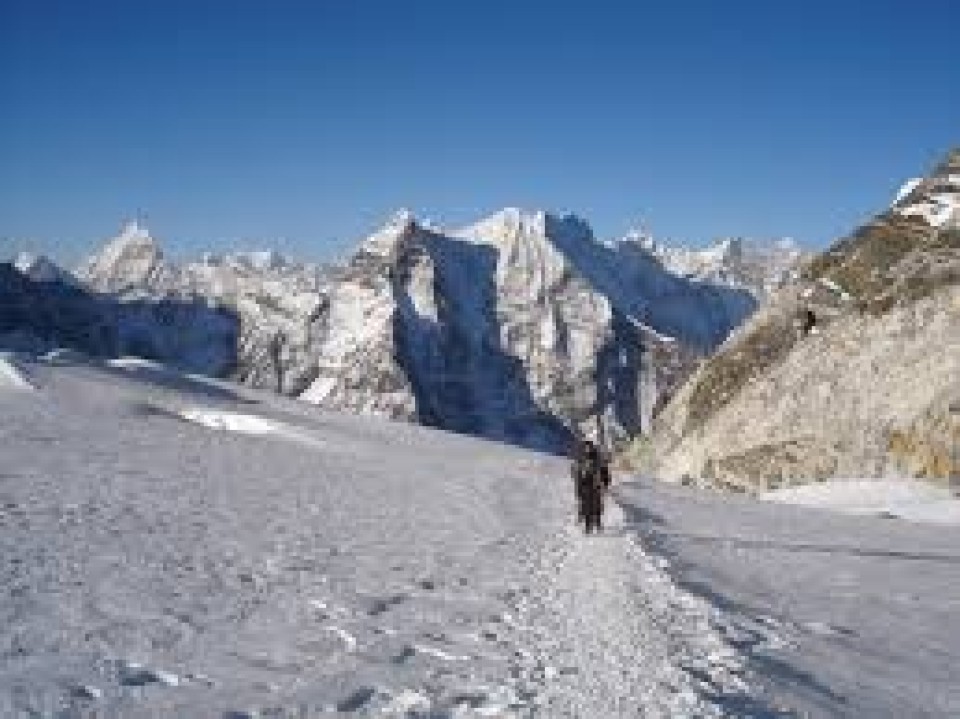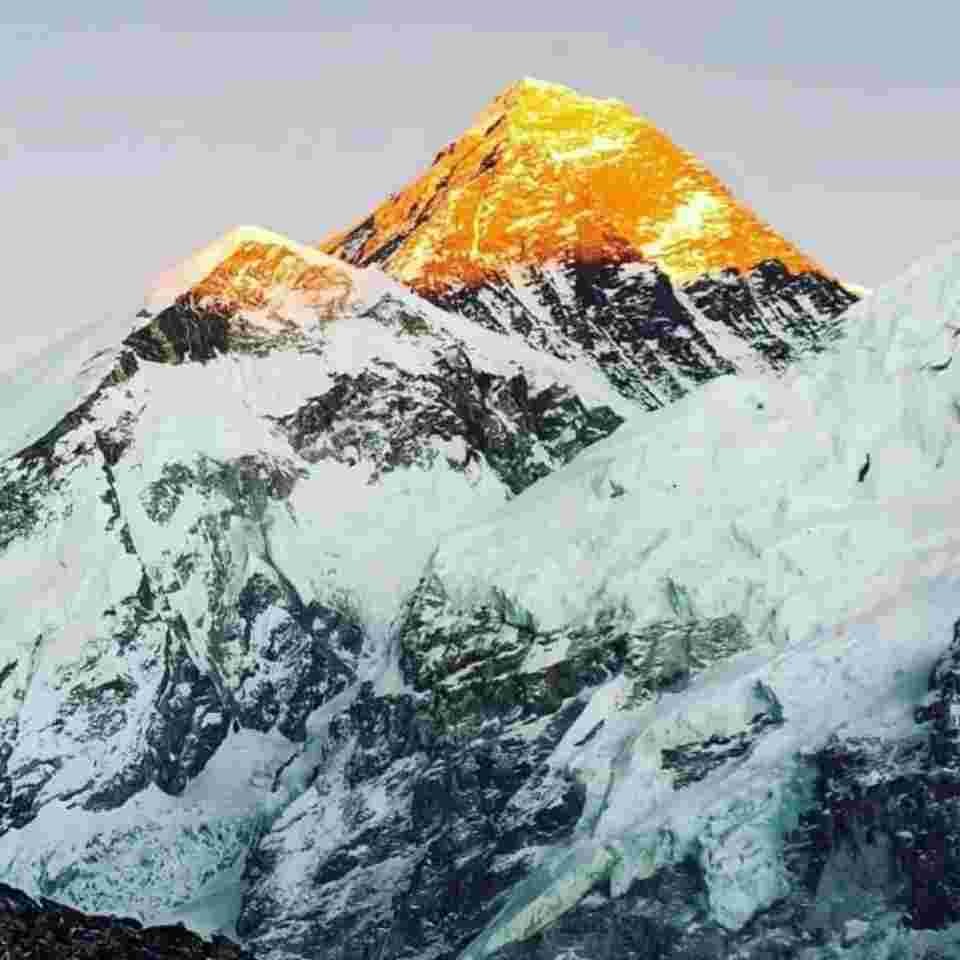- 25, Sep 2023 |
- adventuremagic.com

Best Time to Climb Mera Peak
Best Time to Climb Mera Peak:
Climbing Mera mountain is an exciting adventure through dust and snow to the summit of Nepal's greatest trekking mountain. It is one of the best mountains in Nepal, attracting both novice and experienced climbers. However, Mera Peak (6,476m) is more popular with amateurs, while pros have many options in Nepal, such as Mt Everest and Annapurna. And, before embarking on your expedition, you should know the optimal time to climb Mera peak.
Since its initial ascent in 1953 AD, this peak has witnessed many professional and novice climbers at various times. The number of successful ascensionists is not slowing down; rather, it is increasing with time. You are aware that preparation, planning, climbing ability, and weather all play a role in a successful ascent of any peak. The weather is more important than the rest since you cannot control the weather.
Plus, the weather does affect your climbing journey directly. That is the harsher the climate is the more risks are there while climbing and vice versa. And, who climbers in this entire world would like to have added risks when you can avoid such risks by doing the climb at the right time, rarely some.
Because you cannot control the weather, the only thing you can do is choose the appropriate weather and time. Choosing the correct time ensures that your planning, preparation, and hard work get the desired results. Climbing Mera summit or any other summit at the wrong moment is the simplest way to waste your time and energy.
Not only that, but climbing Mera Peak at the wrong time will prevent you from exploring Mera Peak's heavenly home, the Khumbu region. Khumbu has the world's three tallest peaks, including Mt Everest and Mt Lhotse, as well as other summits, beautiful scenery, and rich vegetation. As a result, choosing the optimal time to climb Mera Peak is not a terrible idea at all.
So, we've put up a guide regarding the optimum time to climb Mera Peak, as well as some tips for doing so. Read every phrase that follows and schedule your Mera Peak excursion accordingly:
Mera peak Climbing Season:
Autumn:
On-seasons are periods when you can go Mera Peak Climbing without thinking or worrying too much. On-seasons, often known as the best time or peak times, have everything in place: consistent weather, warm temperatures, no rain, and no abrupt change. Autumn and Spring are the two ideal times of year to experience all of the above characteristics. Let us just immerse ourselves in each of these seasons to learn more about them.
When asked when is the best time to climb Mera Peak, autumn should be at the top of the list. This is because it is the most secure, thrilling, and enticing period in Nepal for any type of adventurous activity. Autumn air arrives in Nepal's surrounds throughout September, October, and November.
September is the first month of autumn after the Monsoon has passed. There will be some lingering Monsoon clouds in the sky in early September, causing light rain. However, once Autumn arrives, the entire environment and weather begin to stabilize, with no rain or snowfall and the temperature begins to rise.
This trend will continue throughout October and November. The temperature in the lower Khumbu region (below 4000m) ranges between 12°C during the day and 6 to 8°C at night. However, zero degrees are possible in higher portions of the Khumbu region, such as at Mear Peak.
However, because Winter follows Autumn, the last few days of November are colder than the rest of the season. Pack some extra warm clothing for the next winter if you are traveling around November. Similarly, mild rain falls in early September. Add rain gear or postpone the journey until mid-September, October, or early November.
Reason for doing Mera Peak Climbing in Autumn
Weather that is stable and clear
The ideal climbing temperature
Visibility is excellent.
Rainfall and weather changes are extremely unlikely.
The best time to go on an adventure in Nepal.
All-day mountain vistas Opportunities to meet a lot of new people on the busy trails
Nepal's holiday season
The disadvantages of climbing Mera Peak in autumn
Crowded trails due to high season Hassles while obtaining packages, tickets, and lodgings
Spring
When it comes to the optimal time to climb Mera Peak, there is little doubt that Spring is just as fantastic as Autumn. We are not exaggerating when we remark that Spring has conditions that are extremely similar to Autumn. During the Spring season, the weather remains consistent, as does the temperature, which is warm enough for climbing. In addition, the vista is surrounded by lush foliage and blooming flowers. Spring lasts in Nepal through March, April, and May.
With winter behind us, anyone planning to climb Mera Peak in the spring will be rewarded in a variety of ways. During the day, the temperature in the lower Khumbu region is always around 10°C. And it begins to decrease when the Sun sets, reaching -4°C in the morning and at night. However, as you ascend, the temperature drops, and until you reach the summit of Mera Peak from its base camp, you must trek in temperatures as low as -30°C. This is how the temperature behaves during the Spring season, which is acceptable with the proper gear and apparel.
Furthermore, the weather is completely stable, with no threat of rain or precipitation. Spring days, on the other hand, are bright with wide skies and the sun blazing overhead, making climbing simpler. In addition, those who climb Mera Peak in the spring will be able to enjoy clear views of mountains and terrains. Don't miss seeing Mt. Everest, Mt. Lhotse, and Mt. Cho Oyu as they look completely different in the spring.
For your knowledge, the first few weeks of March are colder than usual due to the end of the winter season. If you are traveling in early March, make sure you bring warm clothing. Similarly, rain clouds may appear in late May as the Monsoon approaches Nepal. Be prepared for that as well, or simply choose April as the best month of the spring.
Benefits of doing Mera Peak Climbing in Spring
Clear vision, consistent weather, and a comfortable temperature
Season of lush vegetation and blooming flowers
There is little to no possibility of rain.
The second most popular climbing season in Nepal.
Making new pals while hiking
Off-seasons for Mera Peak Climbing
Mera Peak has off-seasons. Climbing season is when the trails to Mera Peak are generally deserted. These events are attributed to adverse weather, rains, cold temperatures, snowfall, and so on. In other words, meteorological conditions do not favor climbers, but rather make them more challenging. There are two off-seasons: monsoon (summer) and winter. Let us begin:
Summer/ Monsoon
Do you recall moments when you were trapped inside a room due to heavy rain? Yes, I'm referring to the Summer season, also known as the Rainy and Monsoon seasons. During June, July, and August, this season brings a lot of rain clouds to Nepal's skies. These are the wettest months of the year, with excessive rainfall. Trails get muddy during this season, while higher elevations become snowy. Although this is not the best time to climb Mera Peak, several climbers have tried their luck during this season.
Even though there is rain during the Monsoon season, the temperature before the rain is warm. In the daylight, the walking paths of Mera Peak, for example, are around 15°C. As you travel higher and higher, the temperature rises, and vice versa. However, as the rain begins, the temperature drops rapidly and dramatically in the higher elevations. The aftermath of rainfall in the Khumbu region is visible, as rain clears the view of dust. After the rain, the mountain views and skies are at their best. This is the one enjoyable aspect of Mera peak climbing during the Monsoon season.
Going up Mera Peak during the Monsoon season is a risky decision that could result in a failed climb. However, if you must do it during the Monsoon season, choose either late August or early June. During those times, the monsoon clouds are either not fully formed or are only partially formed, resulting in less rainfall. Alternatively, call Peak Climbing Nepal, who will offer you the best climbing deal during the Monsoon season.
Benefits of doing Mera Peak Climbing in Monsoon
Trekking trails that are empty and serene
Simple packages, plane tickets, and lodging
Possibilities of receiving discounts
Views that are clear and dust-washed as a result of rain
Rainfall adds an element of adventure.
Risk of doing Mera Peak Climbing in Monsoon
There is a very good likelihood of rain and snowfall.
Above all, the trails are slippery and muddy.
There is a high likelihood of flight delays and cancellations.
Low sunshine and thus less visibility
Because of the extra rain gear, I had to carry a big bag.
Mera Peak Climbing in Winter:
Winter is a period when most of the planet is wrapped in warm blankets. However, there is never an excuse for a daring and eager climber. Some climbers choose to climb Mera Peak during the winter, when it is the driest and coldest of the year. The coldest month in Nepal is December, which lasts into January and February.
With the approach of December, the temperature in Nepal, particularly in higher elevations, begins to fall dramatically. It can get down to -20°C during the harshest hours of the winter season, especially during the peak winter month of January. The temperature is bone-chilling in the highest elevations, such as the base camp and summit point of Mera Peak. Also, expect considerable snowfall in the higher elevations throughout the winter months. But one advantage of winter is that it is the driest season of the year, with no rain. The pathways are not as slick as during the Monsoon, and the mountain views are also plainly visible. Make careful you keep an eye on the mountains because days fly by.
If you can't wait for Autumn, your only option is to go into Winter. However, there are periods in the autumn when the days are less frigid and more comfortable. And those are the months of early December and late February, when the effect of the winter is less severe than in January. Prepare ahead of time and wear appropriate clothing for a successful ascent of Mera Peak.
Benefits of doing Mera Peak Climbing in Winter:
Trails that are less congested and more peaceful
Simple packages, airfare, and lodging
Packages, airfare, and lodgings are all discounted.
There is no likelihood of rain in the forecast.
Views of the mountains that have not been affected
Make yourself eligible for the climb:
First and foremost, you must qualify as a climber for the Mera Peak ascent. With an elevation of 6,476m, Mera Peak is Nepal's highest trekking peak. It's a simple peak for people with more mountaineering training and climbing experience.
Prior climbing expertise is not required, however, having it is a benefit for the Mera peak climber. However, you must be familiar with high altitudes and have trekked or climbed in the higher regions. People who miss out on that experience must deal with the effects of altitude sickness.
Be in a Good physical condition:
It is an absolute necessity when attempting difficult climbs such as Mera Peak. Mera Peak is not difficult to reach, but you must make frequent steep ascents through the hilly and harsh Khumbu region. When you walk over the icy terrains to reach the peak, the rising portion of the Mera peak is a simple ascent. As a result, in order to cope with these circumstances, you must be in excellent physical condition.
Make sure you Choose the best time to climb Mera Peak
As previously stated, the success of a peak climb is highly dependent on the time you choose to climb. Thus, conduct research and choose an appropriate day with ideal weather and conditions. There should be no chance of rain or snowfall during your picking season. Rather, the season should offer pleasant temperatures, clear skies, and days with good visibility. Climbing Mera Peak at such a season makes the climb even easier, and there is a high success rate. And we see that kind of right period in the fall and spring. Choose one of these and prepare to begin your ascent to Mera Peak.
Make sure you have the right gear and clothing
During Mera Peak Climbing, you will primarily rely on your gear and clothing. As a result, in order to have an outstanding climbing experience, you should choose the proper kind of gear and apparel. The weather and circumstances atop Mera Peak change with the seasons. For example, if it's too chilly outside, you should bring warm clothes, and if there's a risk of rain, you should bring rain-proof clothing. As a result, when packing your bag for Mera Peak, be sure that the clothes you choose are appropriate for the weather conditions.
Similarly, mountaineering equipment is required for the Mera peak expedition. Make sure you have all of the equipment you'll need for the climb. Also, consider whether the gear fits you and whether it is sturdy. You will save money and avoid equipment emergencies this way.
Hire an experienced climbing guide and company :
You will almost certainly not attempt Mera Peak climbing on your own, as it is extremely dangerous. You will hire a climbing guide who will assist you in every step of the Mera peak trek. As a result, be certain that your guide is knowledgeable. The reason for this is that having an experienced climber is a blessing and the best way to avoid all of the unknowns and headaches.
Other Blogs

Ams sickness-Symptoms &Prevention

Best Time to Trek Annapurna Base Camp


